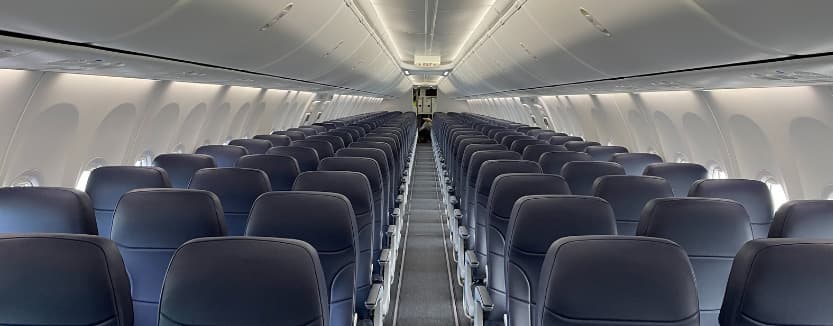When we fly, we rarely stop to think about the many physical factors that enable us to fly. One such example is the fact that we can breathe easy at over 12,000 metres. The answer lies in cabin pressurization.
At the altitude at which an aircraft flies, the natural atmospheric pressure is very low, which means that there would not be enough oxygen for the occupants of the aircraft, i.e. at such a high altitude we would normally run out of air. However, thanks to cabin pressurization, we can make long flights without any problems.
What does it mean to pressurize the cabin?
Pressurizing the cabin means that the air pressure in the cabin space is equivalent to that at a lower altitude. Basically, the oxygen concentration in the air is the same as when the passenger is on the ground.
Being at a higher altitude does not mean that there is less oxygen, but that the concentration of oxygen in the air is lower.
How is cabin pressurization carried out?
There are different types of cabin pressurization depending on the aircraft. Generally, the pressurization method consists of obtaining pressurized air from the aircraft engines.
Through the compression stage of the engine, the air is taken from outside the aircraft and compressed through compressors to feed the turbine power. During the different stages of compression of the clean air we find the “bleed valves” which extract part of the air collected and redirect it to the cabin pressure regulating systems.
Another mechanism that helps to pressurize the aircraft fuselage are the air outlet valves. These are responsible for regulating the amount of air leaving the aircraft by opening and closing. If an increase in pressure is required, they close, and if a reduction is required, they open.

What does cabin pressurization entail?
One of the main consequences of the pressurization system is that the air has a very low humidity. The air outside the aircraft, being at a high altitude, has less water than the air at sea level. Moreover, because it is particularly cold, it is heated in the aircraft’s turbine itself, which dehydrates it a little more.
One of the consequences of the change in pressure is also the clogging of the ears. When the plane takes off, the pressure outside the ear decreases and when it lands it increases, which causes our eardrum to respond by plugging and popping respectively.
Wouldn’t it be easier to fly lower?
Flying lower would facilitate the pressurization process, but would bring more navigation problems. A lower flight would have to take into account higher mountains and other factors such as bad weather.
Modern aircraft are also designed to fly at altitudes of over 12,000 metres, so they are less efficient at low altitudes.
Pressurization systems are vital to aviation and, without them, it would be impossible to fly the air routes that are flown today. Knowing and mastering the physical processes that occur during flight is a fundamental factor in flying an aircraft professionally. This knowledge will allow you to be aware of possible errors and surprises that may occur during a flight.
